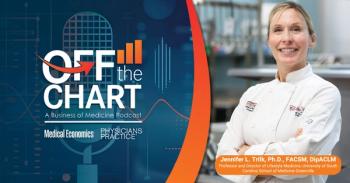
How Obama's Re-election Will Change Medical Practice Staff
President Obama’s victory means key health reform initiatives will move forward. For many medical practices, that means big staffing changes are on the horizon.
It’s official. President Obama has secured another four years in the Oval Office, and with it, healthcare reform. For many practices, that means big staffing changes are on the horizon.
An estimated
To deal, practices will need to find new ways to improve and enhance access to patient care - some practices already are.
“We’ve seen [demand for nurse practitioners (NPs) and physician assistants (PAs)] steadily climbing throughout the year and we don’t anticipate it changing or flattening off any time soon,” Tricia Pattee, director of product management at HealtheCareers Network, told Physicians Practice.
“This is due to the physician shortage, and we’re seeing a lot of the NPs and PAs backfilling where physicians haven’t been able to be filled and taking on a lot of those responsibilities. With the [outcome of] the election last night, we do anticipate the increased number of patients needing care to also affect this and to continue the increase in demand” for NPs and PAs.
Of course, as demand heats up, supply cools down. If your practice is considering hiring an NP or PA in the near future, prepare for some stiff competition.
“I think that as we saw the nursing shortage follow the physician shortage, we’ll see a similar trend with the [nonphysician] practitioners also be in more demand and have a shortage there,” said Pattee. “The good thing for nursing and [nonphysicians] backfilling physicians is that the education takes obviously a shorter period to complete, so it will be easier for us to recover in those shortage areas just because of the time to become qualified.”
There are other reasons beyond dealing with increased patient demand that practices may want to consider hiring PAs and/or NPs. A recent study in the Archives of Internal Medicine found that 38 percent of physicians have burnout symptoms, characterized as loss of enthusiasm for work, feelings of cynicism, and a low sense of personal accomplishment. Nonphysician providers can help address that problem, said Pattee.
“Training other people outside of their physicians to take on some responsibilities to prevent some of the burnout is a key component here,” she said. “... I think anything that revolves around training and getting more of a team environment in the facility is key so that responsibilities can be shared and we don’t see people leaving the field all together because they can’t handle the stress or the workload.”
What staffing changes do you think your practice will make due to the election outcome?
Newsletter
Optimize your practice with the Physicians Practice newsletter, offering management pearls, leadership tips, and business strategies tailored for practice administrators and physicians of any specialty.









